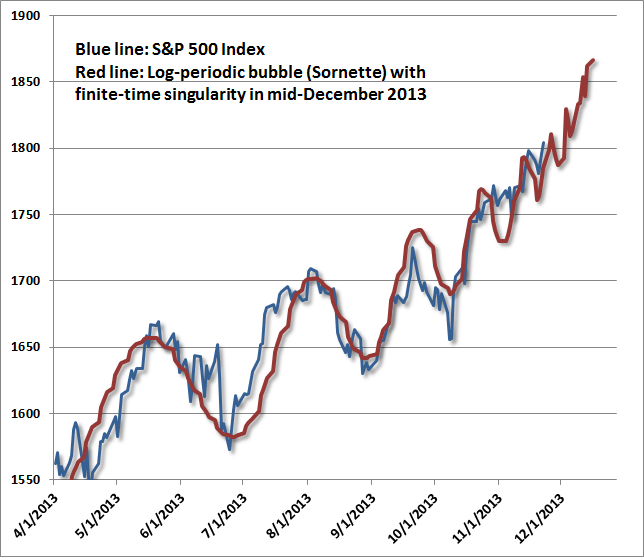With every other bear throwing in the towel left and right these days, we fully expected that the latest letter by SocGen’s Albert Edwards would have something about “how much he hates looking at himself in the mirror, but…” and then we would be served with some garbage like the following margin expectations chart.
Luckily none of that happened. Instead we were greeted by the sharp insight and keen intellect that we have grown to expect from AE, and that have disappeared from the repertoire of so many other sellouts and lemming cheerleaders. Ironically, the topic of Edwards’ latest piece is precisely the chart above – the explosion in future margins, or rather the complete lack thereof. In fact, what Edwards is seeing is quite the opposite. To wit:
The margin squeeze that is unfolding as unit labour costs climb above company selling price inflation…
… leaves the economy extremely vulnerable to a downturn in the investment cycle. Business output inflation is measuring a wider basket of goods and services than the Fed?s favoured measure of inflation, the core personal consumption expenditure (PCE) deflator, but it does move in a very similar fashion (see chart below). Low pricing power is leaving the US economy more vulnerable than many suppose. In my view, a full-blown profits and investment downturn is most likely to be triggered by Asian and EM devaluations releasing surplus capacity onto the West and crushing pricing power even further. As Ian Harwood, my former boss used to say, ?”Watch the profit cycle closely. We ignore it at our peril?.”
This is a useful follow up to our earlier observations on the current status of the leverage cycle, when we noted that while the business cycle may be dead, but if it isn’t we are now on the verge, if not have entered a full-blown recession.
We have, on these pages, long believed that corporate profits should be watched closely, not for their direct impact on equity valuations, but their impact on the economic cycle. Most economic models have profits dropping out as a residual, but they are a key driver of the economic cycle. Growth in profits determines the growth of investment, inventories and employment. (Note I emphasise the growth, and not the level, of profits or the rate of profitability).
Over the years I have tended to focus on US pre-tax domestic non-financial profits as a best lead indicator for US-based company business spending. In the chart below I show this profits measure together with real growth in business investment, including inventories. Profits growth typically leads investment spending.
If we can get a handle on the profits cycle we can avoid being caught out by the investment cycle and recessions. Typically it was said that ?recessions were made in Washington? as the Fed jacked up rates to fight inflation. This not only curbed the credit cycle but squeezed corporate profits to the point that it triggered a downswing in the investment cycle and ?caused? a recession.
So in many investors? minds a recession will not occur unless the Fed triggers one with monetary tightening. That is of course nonsense. A credit bubble can burst without any monetary tightening and similarly the profit cycle can turn down due to a variety of factors.
This is a critical observation, one that everyone ignores, and one which as the first two charts above show, means that unless the Fed proceeds to inject funds directly into corporate revenues (there is a reason why revenues will have declined for 3 quarters in a row), one can kiss not only the idiotic hockeystick forecast margin chart goodbye, but that negative margins, and earnings, are just around the horizon.
Edwards’ conculsion is simple: if the US economy continues on the current track, an economic decline is inevitable, which in turn will crush confidence in the Fed, and make future monetary policy prohibitively costly:
… a recession seems a distant prospect in the minds of most investors. Yet one key precursor for a recession has now fallen into place. Slowing productivity growth means that unit labour costs are now running well ahead of output price inflation. This means a margin and profits downturn is now about to unfold. That typically is a key precursor of recession.
Finally, for those who are will be quick to acuse Edwards of crying wolf, he has a few words for you too:
That confidence in a long cycle comes partly with a high level of certainty that the monetary authorities remain in control of the economic cycle. The doomsayers who predicted that this recovery was on the verge of faltering have been proved wrong, and like the boy who cried wolf, can be safely ignored by the market. Yet that is exactly what happened in 2006 with the US consumer and housing boom, where the voices of caution had been so wrong, for so long, that their Cassandra-like utterances were ignored. Cassandra?s forecasts may have been ignored, but they proved to be correct. Investors demand a sign of when to get out and that trigger may have just arrived.
Crying wolf or not, what Bernanke and his central-planning henchmen are now doing, is simply delaying the inevitable day when realty finally catches up with every cycle, and law of nature that the Fed, courtesy of hundreds of billions of de novo liquidity, has – until this point – successfully deferred. The problem is that perhaps the most important law – that of diminishing returns – is now fianlly breathing down Mr. Chair(wo)man’s neck.
![]()
via Zero Hedge http://feedproxy.google.com/~r/zerohedge/feed/~3/-M9ngJLC3tk/story01.htm Tyler Durden



















